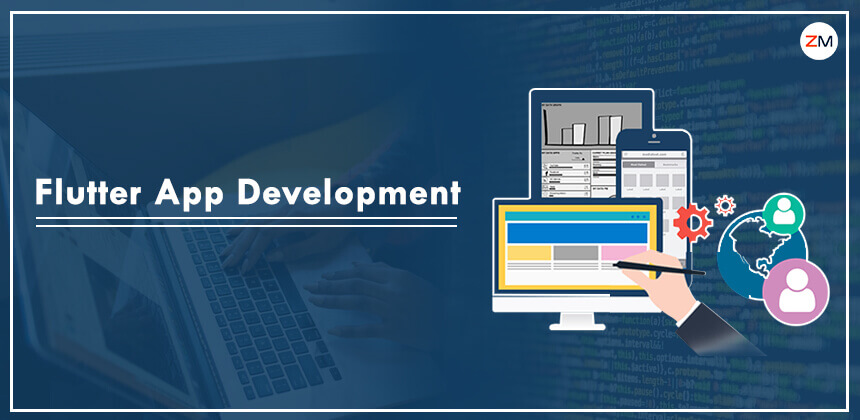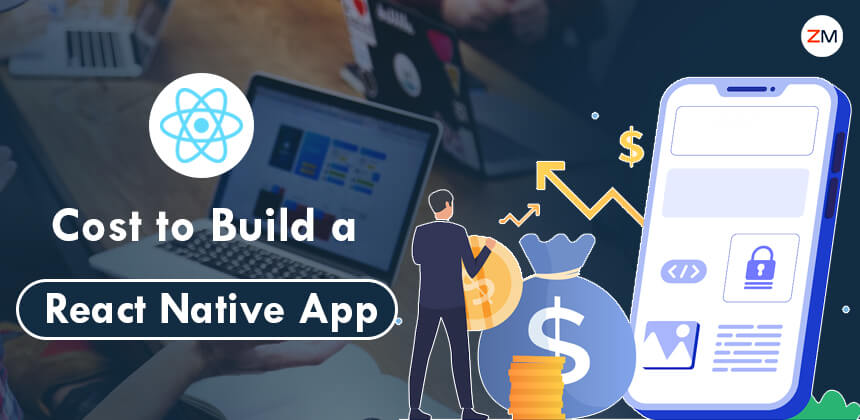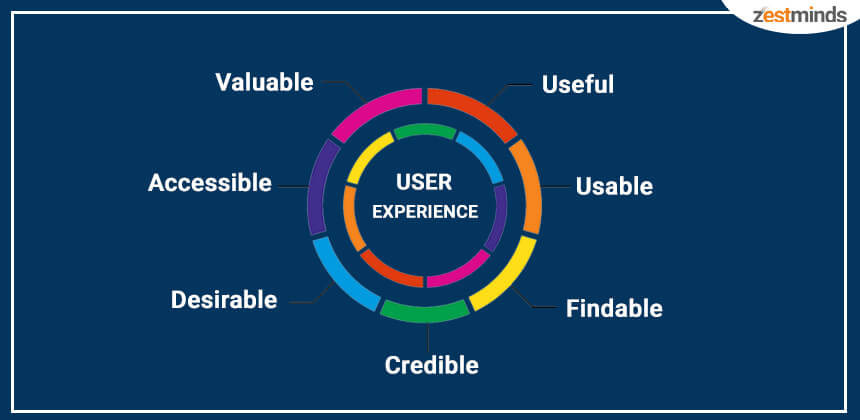Google launched Flutter in December 2018 with a lot of care and commitment, regaining the lead in cross-platform software development frameworks.
Here's how Flutter blends into the marketplace:
• Google launched a beta version of Flutter for the internet called Hummingbird, although it is now referred to as a Flutter web.
• With the initial launch, Google did not take a backseat. It includes breaking updates for Flutter 1.12.
• Following that, Google introduced support for developing Chrome OS applications.
• It also added enhanced support and UI capabilities with the recent stable version of the Dart 2.3 SDK.
On the other hand, Flutter is unquestionably rising faster than a beanstalk, as shown by the rapid number of Flutter applications released on Google Play. It seems to be a panacea for all of your creation woes. Whether you wish to recruit software developers or not, you must consider what Flutter is and how it relates to your app form whether you choose to create an app or enhance your app experience.
Getting to Know the Google Flutter SDK
Flutter isn't a framework in the traditional sense. Instead, Flutter is part of Google's mobile app SDK, which provides integrated architecture, tools, and widgets that offer developers a major edge in designing and deploying visually pleasing, entertaining, and performance-oriented apps that run across multiple platforms. To create different programs, you only need one codebase.
 More on Flutter: It's a free and open-source mobile app creation SDK that gives you a wide variety of Widgets that use its own high-performance rendering engine, guaranteeing app customization usability without losing pace.
Thanks to Flutter widgets, which enable software developers to build a native-like app with a gorgeous user interface. Based on DART, Google's in-house programming language, which is fast, object-oriented, and incredibly simple to learn. Flutter has also developed itself as a serious rival to React Native and other leading Native software development frameworks, with 39 percent of developers using it.
More on Flutter: It's a free and open-source mobile app creation SDK that gives you a wide variety of Widgets that use its own high-performance rendering engine, guaranteeing app customization usability without losing pace.
Thanks to Flutter widgets, which enable software developers to build a native-like app with a gorgeous user interface. Based on DART, Google's in-house programming language, which is fast, object-oriented, and incredibly simple to learn. Flutter has also developed itself as a serious rival to React Native and other leading Native software development frameworks, with 39 percent of developers using it.
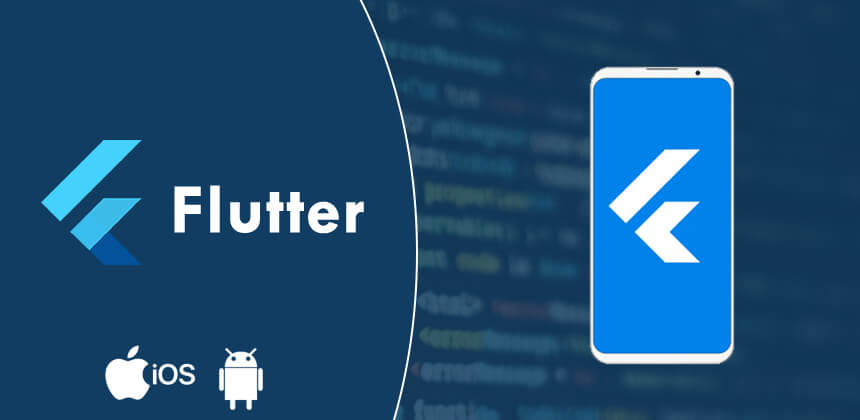
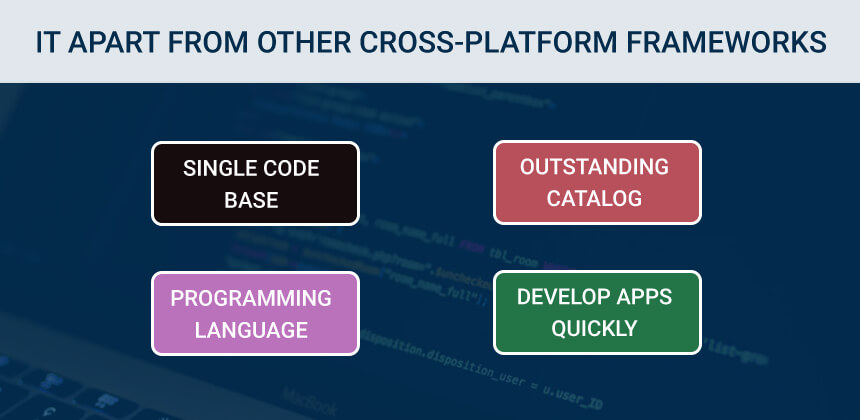 For several operating systems, a single code base is used.
Flutter is a good choice for hiring a mobile app development company to build an iOS and Android app because it is not built on JavaScript and is only used to create Native Apps. Instead, developers must write a single code base to create cross-platform apps that are almost identical in features, UI/UX, and functionality to native apps.
Flutter's Widgets have an outstanding catalog.
If you're a startup or a major company, your product's success is the main concern when engaging in the mobile app creation process. On the other hand, Flutter has all of the wonderful widgets that guarantee the application's native output.
Flutter's vast widget library, including scrolling, navigation, icons, and fonts, makes app creation a breeze. Some of the most well-known companies have used flutter to build their applications.
Flutter is a free and open-source programming language.
If you're thinking about hiring a flutter software developer firm for your upcoming project, keep in mind that Flutter is an open-source programming language. Developers can instantly transform their app concept into an ideal plan by using the wide range of already built-in gorgeous material design features, such as Cupertino widget, rich motion APIs, smooth, natural scrolling actions, and so on, regardless of how complicated their project is. As a consequence of its open-source architecture, developers will play with a wide variety of design choices when creating an application using Flutter.
With Hot Reload, you can develop apps quickly.
Flutter's hot reload feature sets it apart from the competition. This feature enables developers to innovate, create user interfaces, add functionality, and debug applications in real-time. Hot reload automatically shows the coding revisions, so you don't have to save the file first to see the results of your final modifications. Hot reload will represent changes in the app's current state, allowing you to continue executing code while developers work on the project in real-time.
Flutter's Architecture is Backed by Sophisticated API, which allows you to use simpler, safer, and smoother interface animations. Flutter is much easier to incorporate into the current app, which means you can add a new UI in the same app.
Flutter helps developers to use Google's Firebase as a backend, resulting in serverless and scalable applications. Flutter from Google comes with Native Advanced RISC Machines (ARM) code that aids in creating applications for tech companies and startups.
For several operating systems, a single code base is used.
Flutter is a good choice for hiring a mobile app development company to build an iOS and Android app because it is not built on JavaScript and is only used to create Native Apps. Instead, developers must write a single code base to create cross-platform apps that are almost identical in features, UI/UX, and functionality to native apps.
Flutter's Widgets have an outstanding catalog.
If you're a startup or a major company, your product's success is the main concern when engaging in the mobile app creation process. On the other hand, Flutter has all of the wonderful widgets that guarantee the application's native output.
Flutter's vast widget library, including scrolling, navigation, icons, and fonts, makes app creation a breeze. Some of the most well-known companies have used flutter to build their applications.
Flutter is a free and open-source programming language.
If you're thinking about hiring a flutter software developer firm for your upcoming project, keep in mind that Flutter is an open-source programming language. Developers can instantly transform their app concept into an ideal plan by using the wide range of already built-in gorgeous material design features, such as Cupertino widget, rich motion APIs, smooth, natural scrolling actions, and so on, regardless of how complicated their project is. As a consequence of its open-source architecture, developers will play with a wide variety of design choices when creating an application using Flutter.
With Hot Reload, you can develop apps quickly.
Flutter's hot reload feature sets it apart from the competition. This feature enables developers to innovate, create user interfaces, add functionality, and debug applications in real-time. Hot reload automatically shows the coding revisions, so you don't have to save the file first to see the results of your final modifications. Hot reload will represent changes in the app's current state, allowing you to continue executing code while developers work on the project in real-time.
Flutter's Architecture is Backed by Sophisticated API, which allows you to use simpler, safer, and smoother interface animations. Flutter is much easier to incorporate into the current app, which means you can add a new UI in the same app.
Flutter helps developers to use Google's Firebase as a backend, resulting in serverless and scalable applications. Flutter from Google comes with Native Advanced RISC Machines (ARM) code that aids in creating applications for tech companies and startups.
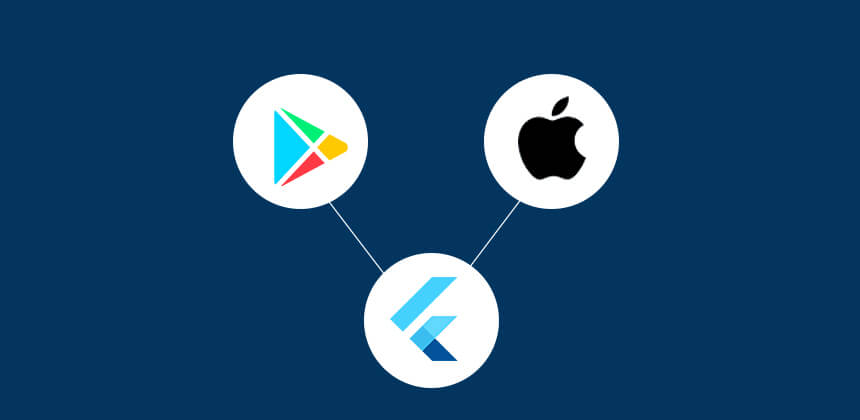 • Flutter has been selected by some of the world's most prestigious companies to create stunning software in record time.
• Flutter is the third most used application, library, and tool, according to a Stackoverflow survey.
• Google first released Flutter in 2015, but with the pace at which Flutter apps are being deployed on Google Play and Apple's App Store, it will continue to evolve and become a top option for cross-platform app creation in the future.
Flutter's Benefits in App Development
You may think that any cross-platform system should do certain things and include certain features needed for the job, and you would be right. However! In certain important ways, Flutter differs from its rivals. Let's take a closer look at what sets Flutter apart from other frameworks for app growth.
The Prospect of Moving Beyond Smartphone
You can do a lot more with Flutter than make smartphone apps. Flutter for Web and Flutter Desktop Embeddings are now available. Google, for example, introduced a technical demo of Flutter Web at this year's I/O conference, which enables users to run pure Flutter applications in a browser without changing the source code.
• Flutter has been selected by some of the world's most prestigious companies to create stunning software in record time.
• Flutter is the third most used application, library, and tool, according to a Stackoverflow survey.
• Google first released Flutter in 2015, but with the pace at which Flutter apps are being deployed on Google Play and Apple's App Store, it will continue to evolve and become a top option for cross-platform app creation in the future.
Flutter's Benefits in App Development
You may think that any cross-platform system should do certain things and include certain features needed for the job, and you would be right. However! In certain important ways, Flutter differs from its rivals. Let's take a closer look at what sets Flutter apart from other frameworks for app growth.
The Prospect of Moving Beyond Smartphone
You can do a lot more with Flutter than make smartphone apps. Flutter for Web and Flutter Desktop Embeddings are now available. Google, for example, introduced a technical demo of Flutter Web at this year's I/O conference, which enables users to run pure Flutter applications in a browser without changing the source code.
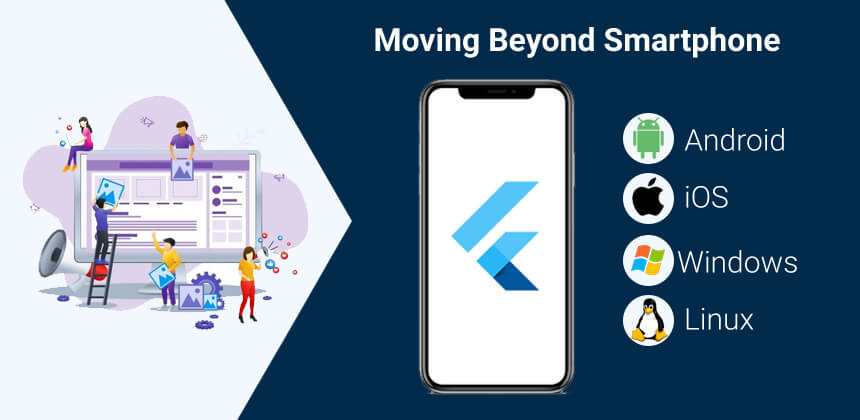 This significant milestone signals the transformation of Flutter from a cross-platform mobile app interface to a full-fledged cross-platform development tool.
Even though everything in the system except the mobile component is not yet deemed production-ready, an accomplished Flutter developer can make a pure Flutter app run on any big platform today, like Android, iOS, Web browsers, Windows, macOS, Linux, and even embedded computers. And the app will work without any updates to the Dart code.
Implementation of Simple Platform-Specific Logic
Aside from the user interface, many real-world smartphone apps rely on specialized OS-level functionality like fetching GPS coordinates, Bluetooth connectivity, sensor data collection, authorization processing, password management, and so on. Many of these are possible when creating a Flutter program using a Google-supported ready-to-use plugin.
This significant milestone signals the transformation of Flutter from a cross-platform mobile app interface to a full-fledged cross-platform development tool.
Even though everything in the system except the mobile component is not yet deemed production-ready, an accomplished Flutter developer can make a pure Flutter app run on any big platform today, like Android, iOS, Web browsers, Windows, macOS, Linux, and even embedded computers. And the app will work without any updates to the Dart code.
Implementation of Simple Platform-Specific Logic
Aside from the user interface, many real-world smartphone apps rely on specialized OS-level functionality like fetching GPS coordinates, Bluetooth connectivity, sensor data collection, authorization processing, password management, and so on. Many of these are possible when creating a Flutter program using a Google-supported ready-to-use plugin.
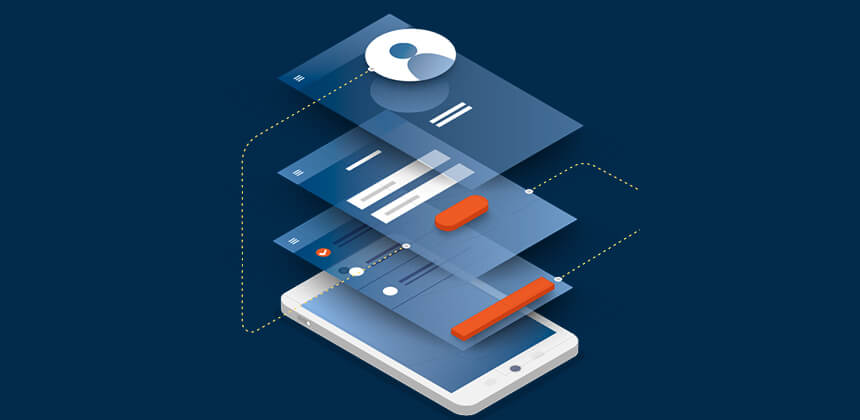 Of course, there might be times when the software relies on an OS functionality that isn't yet available as a plugin. But don't worry, the squad has you covered! Flutter makes it convenient to connect between platform-native code and Dart via platform channels. With a little more work on the native side, you can incorporate everything a native app can do on a Flutter app.
Flutter's own rendering engine enables you to do many things in your applications that aren't possible on other platforms. Obviously, this necessitates a fairly strong structure. In reality, without a high-performance cross-platform rendering engine, most of the points discussed above would be impossible.
Flutter uses Skia to make itself onto a canvas created by the web. Flutter's built-in UI can run on almost any platform, thanks to the engine. To put it another way, you don't have to change the UI to move it to a platform, which significantly simplifies the creation process.
Customized, animated user interfaces of any complexity are available.
One of Flutter's most powerful features is the ability to edit everything you see on the computer, no matter how complicated it is. Although it is normally possible to create a highly customized UI on native platforms, the effort needed varies by magnitude.
On the other hand, Flutter adds flexibility and versatility to the procedure without contributing to the workload. Flutter makes it easy to perform mutual entity changes, shape/color/shadow manipulations, clipping, and transformations.
Similar to the Performance of Native Apps
For a decent user experience, application consistency is critical. Although precise numbers are difficult to come by, it's fair to assume that Flutter device performance would be indistinguishable from native app performance in the vast majority of instances and even better in complex UI animation scenarios.
Of course, there might be times when the software relies on an OS functionality that isn't yet available as a plugin. But don't worry, the squad has you covered! Flutter makes it convenient to connect between platform-native code and Dart via platform channels. With a little more work on the native side, you can incorporate everything a native app can do on a Flutter app.
Flutter's own rendering engine enables you to do many things in your applications that aren't possible on other platforms. Obviously, this necessitates a fairly strong structure. In reality, without a high-performance cross-platform rendering engine, most of the points discussed above would be impossible.
Flutter uses Skia to make itself onto a canvas created by the web. Flutter's built-in UI can run on almost any platform, thanks to the engine. To put it another way, you don't have to change the UI to move it to a platform, which significantly simplifies the creation process.
Customized, animated user interfaces of any complexity are available.
One of Flutter's most powerful features is the ability to edit everything you see on the computer, no matter how complicated it is. Although it is normally possible to create a highly customized UI on native platforms, the effort needed varies by magnitude.
On the other hand, Flutter adds flexibility and versatility to the procedure without contributing to the workload. Flutter makes it easy to perform mutual entity changes, shape/color/shadow manipulations, clipping, and transformations.
Similar to the Performance of Native Apps
For a decent user experience, application consistency is critical. Although precise numbers are difficult to come by, it's fair to assume that Flutter device performance would be indistinguishable from native app performance in the vast majority of instances and even better in complex UI animation scenarios.
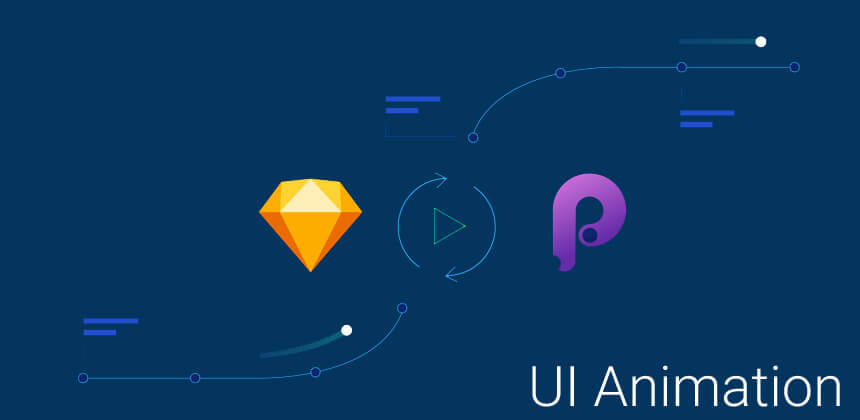 What is the reason for this? Flutter does not rely on any intermediate code representations or interpretations, unlike most cross-platform frameworks. The Flutter program is written explicitly in machine code, avoiding any performance problems during the interpretation process.
With Flutter, you eventually have your release submission completely compiled ahead of time.
Time-to-Market Acceleration
This one is easy to understand. The Flutter creation system is faster than its competitors. When opposed to an app built separately for Android and iOS, you would expect a Flutter app to take at least two times as long to create. The biggest explanation is that you don't have to write any platform-specific code to achieve the graphics you want in your game. Without dealing with a native device equivalent, any 2D-based UI can be implemented in Flutter.
What is the reason for this? Flutter does not rely on any intermediate code representations or interpretations, unlike most cross-platform frameworks. The Flutter program is written explicitly in machine code, avoiding any performance problems during the interpretation process.
With Flutter, you eventually have your release submission completely compiled ahead of time.
Time-to-Market Acceleration
This one is easy to understand. The Flutter creation system is faster than its competitors. When opposed to an app built separately for Android and iOS, you would expect a Flutter app to take at least two times as long to create. The biggest explanation is that you don't have to write any platform-specific code to achieve the graphics you want in your game. Without dealing with a native device equivalent, any 2D-based UI can be implemented in Flutter.
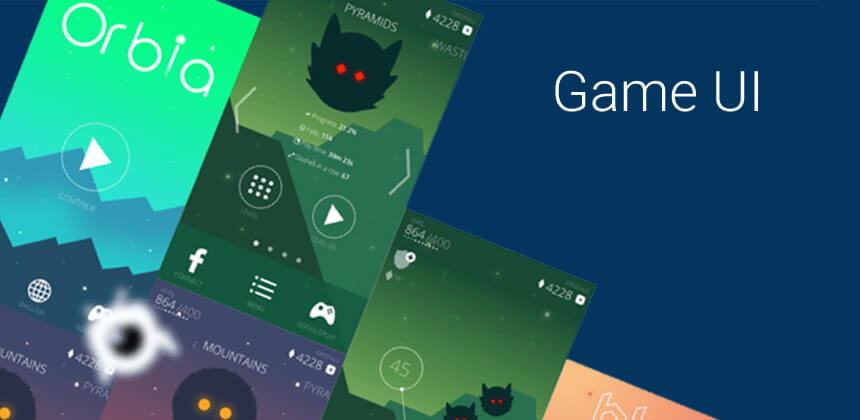 Aside from that, Flutter provides a declarative API for UI creation, which greatly improves the development experience. When it comes to visual changes, this is particularly so.
Reduced Time to Develop Code
In a developer experience, shipping a typical mid-size Android app to the test system takes at least 40 seconds. It may also take a long time to change a slight visual feature of the style. 'Wait, but Android Studio has a layout preview for that.' And it does. But there's a catch: the feature is limited and doesn't always function as intended, especially for custom views.
Flutter's "hot reload" functionality, on the other hand, allows you to see the improvements you've made almost immediately without missing your current application state. And it's because of this accelerated production tempo that Flutter's software development is many times quicker.
Furthermore, the Flutter team has worked hard to include a wide range of ready-to-use widgets. The majority of them are highly flexible, allowing you to save time like no other framework. Flutter has a vast collection of Material and Cupertino widgets and various key interface widgets that precisely imitate the behavior of each design language.
When you use Flutter, you can skip many insanely time-consuming steps in app creation, making the whole process quicker, smoother, and less stressful.
Flutter allows you to share both the user interface and business logic.
Experts realize that virtually every cross-platform architecture requires codebases to be shared between target systems. Apart from Flutter, there are no other application frameworks that allow you to share both the UI code and the UI itself.
This type of rendering process makes it easier to create an interface that looks native on any device. The devil, though, is in the details. Since platform-specific components are used for rendering, a property mapping layer for the platform widget and data synchronization for the system widget are needed. That's why any animation must be converted into a platform-specific widget call. That's much more difficult than it needs to be.
Flutter, on the other hand, does not need any platform-specific UI components to render its UI. Flutter only needs a canvas to draw on to display the application's UI.
The rendering of Flutter sets it apart from the competition, removing any concerns about UI quality across platforms.
In summary, sharing the user interface and business logic, which is achievable with Flutter, saves time, money, and the developer's health without compromising the end product's efficiency.
From a business standpoint, is Flutter a viable option?
Yes, yes, and yes.
Some items are precious to a company. These are the platform's reliability, performance, a large talent pool (hiring Flutter developers is relatively easy), and the assurance of strong future tech/product growth and enhancement. The explanation for this is that problems and weaknesses in a platform or infrastructure in all of the specified areas pose a danger to your business, as well as direct and indirect financial losses.
Flutter, from this viewpoint, eliminates the company's risks:
Since Google is developing Fuchsia OS, which is compatible with Flutter, there aren't likely any issues with product growth.
You won't have any difficulty locating engineers if you use Flutter because it already has a wide following of Android developers.
Flutter's uncompromised consistency is illustrated by the growing list of multinational businesses that use it, including Alibaba, Google Advertising, AppTree, Reflect, and My Leaf.
Flutter is a way for a company to avoid challenges such as finding consultants, adapting to emerging technology, and incorporating the tool into the device because of both of these features. As compared to the other cross-platform methods available, Flutter offers the fewest risks to a company, making it the best option for your company.
Here's a quick rundown on some of the benefits of using Flutter for the next smartphone app:
Aside from that, Flutter provides a declarative API for UI creation, which greatly improves the development experience. When it comes to visual changes, this is particularly so.
Reduced Time to Develop Code
In a developer experience, shipping a typical mid-size Android app to the test system takes at least 40 seconds. It may also take a long time to change a slight visual feature of the style. 'Wait, but Android Studio has a layout preview for that.' And it does. But there's a catch: the feature is limited and doesn't always function as intended, especially for custom views.
Flutter's "hot reload" functionality, on the other hand, allows you to see the improvements you've made almost immediately without missing your current application state. And it's because of this accelerated production tempo that Flutter's software development is many times quicker.
Furthermore, the Flutter team has worked hard to include a wide range of ready-to-use widgets. The majority of them are highly flexible, allowing you to save time like no other framework. Flutter has a vast collection of Material and Cupertino widgets and various key interface widgets that precisely imitate the behavior of each design language.
When you use Flutter, you can skip many insanely time-consuming steps in app creation, making the whole process quicker, smoother, and less stressful.
Flutter allows you to share both the user interface and business logic.
Experts realize that virtually every cross-platform architecture requires codebases to be shared between target systems. Apart from Flutter, there are no other application frameworks that allow you to share both the UI code and the UI itself.
This type of rendering process makes it easier to create an interface that looks native on any device. The devil, though, is in the details. Since platform-specific components are used for rendering, a property mapping layer for the platform widget and data synchronization for the system widget are needed. That's why any animation must be converted into a platform-specific widget call. That's much more difficult than it needs to be.
Flutter, on the other hand, does not need any platform-specific UI components to render its UI. Flutter only needs a canvas to draw on to display the application's UI.
The rendering of Flutter sets it apart from the competition, removing any concerns about UI quality across platforms.
In summary, sharing the user interface and business logic, which is achievable with Flutter, saves time, money, and the developer's health without compromising the end product's efficiency.
From a business standpoint, is Flutter a viable option?
Yes, yes, and yes.
Some items are precious to a company. These are the platform's reliability, performance, a large talent pool (hiring Flutter developers is relatively easy), and the assurance of strong future tech/product growth and enhancement. The explanation for this is that problems and weaknesses in a platform or infrastructure in all of the specified areas pose a danger to your business, as well as direct and indirect financial losses.
Flutter, from this viewpoint, eliminates the company's risks:
Since Google is developing Fuchsia OS, which is compatible with Flutter, there aren't likely any issues with product growth.
You won't have any difficulty locating engineers if you use Flutter because it already has a wide following of Android developers.
Flutter's uncompromised consistency is illustrated by the growing list of multinational businesses that use it, including Alibaba, Google Advertising, AppTree, Reflect, and My Leaf.
Flutter is a way for a company to avoid challenges such as finding consultants, adapting to emerging technology, and incorporating the tool into the device because of both of these features. As compared to the other cross-platform methods available, Flutter offers the fewest risks to a company, making it the best option for your company.
Here's a quick rundown on some of the benefits of using Flutter for the next smartphone app:
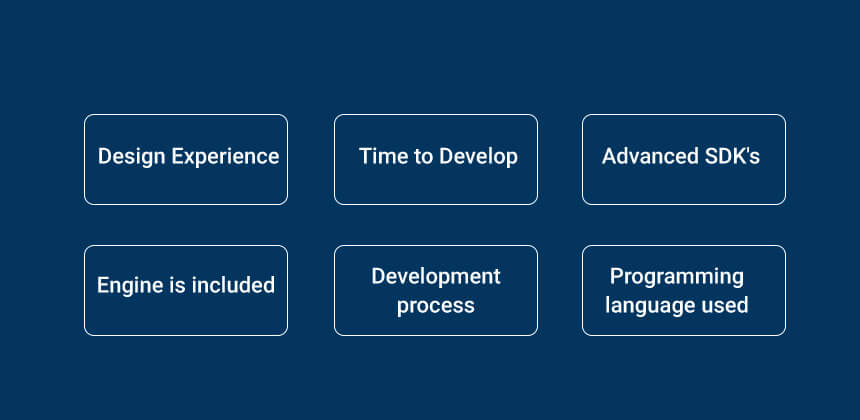 It Offers a Vibrant Design Experience
The near partnership between material design and Flutter creates a user-friendly operation. It delivers the kind of smooth learning experience that consumers demand from native smartphone apps.
Flutter has custom widgets for Android and iOS, giving you the feeling that you're using a native app. The Flutter widget catalog is vast, allowing you to pick and choose based on your particular preferences and specifications.
Requires less time to develop
The entire Flutter team has put in a lot of effort to include a wide range of completely prepared and readymade widgets that allow you to customize your software without writing code for each widget from the start, saving you time.
Developers at any skill level will configure the software with excellent interface trends and best practices due to these widgets' improved usability.
Access to the Native Feature as well as the Advanced SDK's
Since it provides specialized software development kits for basic development, creating a sleek native flutter startup app is a piece of cake for developers. It also offers quick local codes, third-party integrations, and device APIs, which help streamline the growth process.
Flutter's SDK can also be used across all devices, including iOS and Android, and they're reusable!
Its Own Rendering Engine is included.
A customer wants an app that can provide them with the best possible interface and a solid framework; Flutter offers you many choices with your app that you won't find on other platforms.
Flutter makes it easy to mount a Flutter-based UI on almost any device because it uses Skia to render itself on that platform.
Since Flutter has its own rendering engine, there would be no need to adjust the UI when moving to another platform. This is one of the key reasons why companies like the Flutter app grow.
It helps to improve the development process.
Flutter is much easier for a mobile software developer to create high-performance cross-platform apps for a startup app. It uses native binaries, textures, and rendering libraries based on C/C++.
Apps designed with Flutter will also hit 60fps and 120fps on devices that support it, increasing your game's performance.
When it comes to developing a flutter startup app and evaluating its performance, it obviously outperforms the competition, making it a strong candidate for potential startup app growth.
Dart is the programming language used.
Dart has a powerful and entertaining syntax that facilitates powerful architecture and design. Dart also provides easy management, convergence, standardization, and compatibility, currently lacking in other cross-platform systems.
Final Thoughts
With millions of firms emerging each year, it's obvious that standing out in the market on a shoestring budget is one of the most important entrepreneurs' issues. If you want to deliver the software without breaking the bank, you can consider using a cross-platform app development kit, which helps you to build applications for both Android and iOS using a common codebase.
Flutter is Google's production and is built on the Dart programming language, so you can't underestimate its promise and functionality for developing applications that run as well as native apps. And developers who are familiar with Javascript, Java, C++, and Object programming should give Flutter a try to see how powerful it is.
We at Zestminds, take care of everything right from the time to come to us with your idea. We have a team of experienced developers in Flutter who would take your app to the next level. Let's discuss this by dropping us an email at contact@zestminds.com.
It Offers a Vibrant Design Experience
The near partnership between material design and Flutter creates a user-friendly operation. It delivers the kind of smooth learning experience that consumers demand from native smartphone apps.
Flutter has custom widgets for Android and iOS, giving you the feeling that you're using a native app. The Flutter widget catalog is vast, allowing you to pick and choose based on your particular preferences and specifications.
Requires less time to develop
The entire Flutter team has put in a lot of effort to include a wide range of completely prepared and readymade widgets that allow you to customize your software without writing code for each widget from the start, saving you time.
Developers at any skill level will configure the software with excellent interface trends and best practices due to these widgets' improved usability.
Access to the Native Feature as well as the Advanced SDK's
Since it provides specialized software development kits for basic development, creating a sleek native flutter startup app is a piece of cake for developers. It also offers quick local codes, third-party integrations, and device APIs, which help streamline the growth process.
Flutter's SDK can also be used across all devices, including iOS and Android, and they're reusable!
Its Own Rendering Engine is included.
A customer wants an app that can provide them with the best possible interface and a solid framework; Flutter offers you many choices with your app that you won't find on other platforms.
Flutter makes it easy to mount a Flutter-based UI on almost any device because it uses Skia to render itself on that platform.
Since Flutter has its own rendering engine, there would be no need to adjust the UI when moving to another platform. This is one of the key reasons why companies like the Flutter app grow.
It helps to improve the development process.
Flutter is much easier for a mobile software developer to create high-performance cross-platform apps for a startup app. It uses native binaries, textures, and rendering libraries based on C/C++.
Apps designed with Flutter will also hit 60fps and 120fps on devices that support it, increasing your game's performance.
When it comes to developing a flutter startup app and evaluating its performance, it obviously outperforms the competition, making it a strong candidate for potential startup app growth.
Dart is the programming language used.
Dart has a powerful and entertaining syntax that facilitates powerful architecture and design. Dart also provides easy management, convergence, standardization, and compatibility, currently lacking in other cross-platform systems.
Final Thoughts
With millions of firms emerging each year, it's obvious that standing out in the market on a shoestring budget is one of the most important entrepreneurs' issues. If you want to deliver the software without breaking the bank, you can consider using a cross-platform app development kit, which helps you to build applications for both Android and iOS using a common codebase.
Flutter is Google's production and is built on the Dart programming language, so you can't underestimate its promise and functionality for developing applications that run as well as native apps. And developers who are familiar with Javascript, Java, C++, and Object programming should give Flutter a try to see how powerful it is.
We at Zestminds, take care of everything right from the time to come to us with your idea. We have a team of experienced developers in Flutter who would take your app to the next level. Let's discuss this by dropping us an email at contact@zestminds.com.
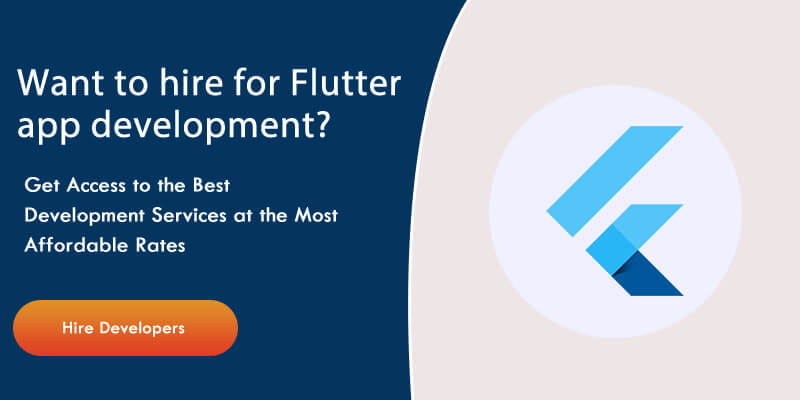
 More on Flutter: It's a free and open-source mobile app creation SDK that gives you a wide variety of Widgets that use its own high-performance rendering engine, guaranteeing app customization usability without losing pace.
Thanks to Flutter widgets, which enable software developers to build a native-like app with a gorgeous user interface. Based on DART, Google's in-house programming language, which is fast, object-oriented, and incredibly simple to learn. Flutter has also developed itself as a serious rival to React Native and other leading Native software development frameworks, with 39 percent of developers using it.
More on Flutter: It's a free and open-source mobile app creation SDK that gives you a wide variety of Widgets that use its own high-performance rendering engine, guaranteeing app customization usability without losing pace.
Thanks to Flutter widgets, which enable software developers to build a native-like app with a gorgeous user interface. Based on DART, Google's in-house programming language, which is fast, object-oriented, and incredibly simple to learn. Flutter has also developed itself as a serious rival to React Native and other leading Native software development frameworks, with 39 percent of developers using it.
In 2021, how much would it cost to develop a startup Flutter app?
If you use Flutter or React Native, there is no regular price for app creation. Even then, based on the scale, feature set, and sophistication of the software, the estimated cost of creating an Android app varies from $5000 to $50,000 and up. The expense is largely determined by the amount of production team you employ for the project and the length of time it takes to complete. Since Flutter is a free, open-source application, companies can potentially escape paying a licensing fee and reuse the code to build applications on other platforms without employing new personnel. The last thing to think of is hiring an iPhone app developer or a smartphone app developer familiar with the Dart programming language. As a result, the time and cost of developing flutter software can be significantly reduced.Why is Flutter the Best Platform for Mobile App Development for Startups?
If you're still not convinced that startups can prefer Flutter over Native apps, keep in mind that Flutter is built using Google's Dart programming language. Furthermore, it has the best interface widgets, allowing startups to build high-performance cross-platform apps on a shoestring budget.
Here are a few compelling reasons why startups should build apps with Flutter:
• First, Flutter allows developers to create apps on all major platforms, including Android and iOS, using a single code base, allowing startups to save money on development services. • Flutter has an efficient yet portable GPU rendering UI that allows it to work on multiple interfaces. Flutter's Hot Reload feature speeds up the app development process and allows developers to work on multiple interfaces. • Visual Studio Code, Android Code, and Xcode are among the IDEs that support the Flutter platform. Flutter software took less time to test since only one codebase had to be reviewed and tested. Furthermore, all systems have the same codebase (Android and iOS). As a consequence, there are fewer chances for coding errors. Flutter's Main Features that Set It Apart from Other Cross-Platform Frameworks For several operating systems, a single code base is used.
Flutter is a good choice for hiring a mobile app development company to build an iOS and Android app because it is not built on JavaScript and is only used to create Native Apps. Instead, developers must write a single code base to create cross-platform apps that are almost identical in features, UI/UX, and functionality to native apps.
Flutter's Widgets have an outstanding catalog.
If you're a startup or a major company, your product's success is the main concern when engaging in the mobile app creation process. On the other hand, Flutter has all of the wonderful widgets that guarantee the application's native output.
Flutter's vast widget library, including scrolling, navigation, icons, and fonts, makes app creation a breeze. Some of the most well-known companies have used flutter to build their applications.
Flutter is a free and open-source programming language.
If you're thinking about hiring a flutter software developer firm for your upcoming project, keep in mind that Flutter is an open-source programming language. Developers can instantly transform their app concept into an ideal plan by using the wide range of already built-in gorgeous material design features, such as Cupertino widget, rich motion APIs, smooth, natural scrolling actions, and so on, regardless of how complicated their project is. As a consequence of its open-source architecture, developers will play with a wide variety of design choices when creating an application using Flutter.
With Hot Reload, you can develop apps quickly.
Flutter's hot reload feature sets it apart from the competition. This feature enables developers to innovate, create user interfaces, add functionality, and debug applications in real-time. Hot reload automatically shows the coding revisions, so you don't have to save the file first to see the results of your final modifications. Hot reload will represent changes in the app's current state, allowing you to continue executing code while developers work on the project in real-time.
Flutter's Architecture is Backed by Sophisticated API, which allows you to use simpler, safer, and smoother interface animations. Flutter is much easier to incorporate into the current app, which means you can add a new UI in the same app.
Flutter helps developers to use Google's Firebase as a backend, resulting in serverless and scalable applications. Flutter from Google comes with Native Advanced RISC Machines (ARM) code that aids in creating applications for tech companies and startups.
For several operating systems, a single code base is used.
Flutter is a good choice for hiring a mobile app development company to build an iOS and Android app because it is not built on JavaScript and is only used to create Native Apps. Instead, developers must write a single code base to create cross-platform apps that are almost identical in features, UI/UX, and functionality to native apps.
Flutter's Widgets have an outstanding catalog.
If you're a startup or a major company, your product's success is the main concern when engaging in the mobile app creation process. On the other hand, Flutter has all of the wonderful widgets that guarantee the application's native output.
Flutter's vast widget library, including scrolling, navigation, icons, and fonts, makes app creation a breeze. Some of the most well-known companies have used flutter to build their applications.
Flutter is a free and open-source programming language.
If you're thinking about hiring a flutter software developer firm for your upcoming project, keep in mind that Flutter is an open-source programming language. Developers can instantly transform their app concept into an ideal plan by using the wide range of already built-in gorgeous material design features, such as Cupertino widget, rich motion APIs, smooth, natural scrolling actions, and so on, regardless of how complicated their project is. As a consequence of its open-source architecture, developers will play with a wide variety of design choices when creating an application using Flutter.
With Hot Reload, you can develop apps quickly.
Flutter's hot reload feature sets it apart from the competition. This feature enables developers to innovate, create user interfaces, add functionality, and debug applications in real-time. Hot reload automatically shows the coding revisions, so you don't have to save the file first to see the results of your final modifications. Hot reload will represent changes in the app's current state, allowing you to continue executing code while developers work on the project in real-time.
Flutter's Architecture is Backed by Sophisticated API, which allows you to use simpler, safer, and smoother interface animations. Flutter is much easier to incorporate into the current app, which means you can add a new UI in the same app.
Flutter helps developers to use Google's Firebase as a backend, resulting in serverless and scalable applications. Flutter from Google comes with Native Advanced RISC Machines (ARM) code that aids in creating applications for tech companies and startups.
Statistics and Facts regarding Flutter for Mobile App Development
• According to Google Trends, Flutter is the second most common language for developing cross-platform mobile applications in 2020, behind React Native. • Flutter has been selected by some of the world's most prestigious companies to create stunning software in record time.
• Flutter is the third most used application, library, and tool, according to a Stackoverflow survey.
• Google first released Flutter in 2015, but with the pace at which Flutter apps are being deployed on Google Play and Apple's App Store, it will continue to evolve and become a top option for cross-platform app creation in the future.
Flutter's Benefits in App Development
You may think that any cross-platform system should do certain things and include certain features needed for the job, and you would be right. However! In certain important ways, Flutter differs from its rivals. Let's take a closer look at what sets Flutter apart from other frameworks for app growth.
The Prospect of Moving Beyond Smartphone
You can do a lot more with Flutter than make smartphone apps. Flutter for Web and Flutter Desktop Embeddings are now available. Google, for example, introduced a technical demo of Flutter Web at this year's I/O conference, which enables users to run pure Flutter applications in a browser without changing the source code.
• Flutter has been selected by some of the world's most prestigious companies to create stunning software in record time.
• Flutter is the third most used application, library, and tool, according to a Stackoverflow survey.
• Google first released Flutter in 2015, but with the pace at which Flutter apps are being deployed on Google Play and Apple's App Store, it will continue to evolve and become a top option for cross-platform app creation in the future.
Flutter's Benefits in App Development
You may think that any cross-platform system should do certain things and include certain features needed for the job, and you would be right. However! In certain important ways, Flutter differs from its rivals. Let's take a closer look at what sets Flutter apart from other frameworks for app growth.
The Prospect of Moving Beyond Smartphone
You can do a lot more with Flutter than make smartphone apps. Flutter for Web and Flutter Desktop Embeddings are now available. Google, for example, introduced a technical demo of Flutter Web at this year's I/O conference, which enables users to run pure Flutter applications in a browser without changing the source code.
 This significant milestone signals the transformation of Flutter from a cross-platform mobile app interface to a full-fledged cross-platform development tool.
Even though everything in the system except the mobile component is not yet deemed production-ready, an accomplished Flutter developer can make a pure Flutter app run on any big platform today, like Android, iOS, Web browsers, Windows, macOS, Linux, and even embedded computers. And the app will work without any updates to the Dart code.
Implementation of Simple Platform-Specific Logic
Aside from the user interface, many real-world smartphone apps rely on specialized OS-level functionality like fetching GPS coordinates, Bluetooth connectivity, sensor data collection, authorization processing, password management, and so on. Many of these are possible when creating a Flutter program using a Google-supported ready-to-use plugin.
This significant milestone signals the transformation of Flutter from a cross-platform mobile app interface to a full-fledged cross-platform development tool.
Even though everything in the system except the mobile component is not yet deemed production-ready, an accomplished Flutter developer can make a pure Flutter app run on any big platform today, like Android, iOS, Web browsers, Windows, macOS, Linux, and even embedded computers. And the app will work without any updates to the Dart code.
Implementation of Simple Platform-Specific Logic
Aside from the user interface, many real-world smartphone apps rely on specialized OS-level functionality like fetching GPS coordinates, Bluetooth connectivity, sensor data collection, authorization processing, password management, and so on. Many of these are possible when creating a Flutter program using a Google-supported ready-to-use plugin.
 Of course, there might be times when the software relies on an OS functionality that isn't yet available as a plugin. But don't worry, the squad has you covered! Flutter makes it convenient to connect between platform-native code and Dart via platform channels. With a little more work on the native side, you can incorporate everything a native app can do on a Flutter app.
Flutter's own rendering engine enables you to do many things in your applications that aren't possible on other platforms. Obviously, this necessitates a fairly strong structure. In reality, without a high-performance cross-platform rendering engine, most of the points discussed above would be impossible.
Flutter uses Skia to make itself onto a canvas created by the web. Flutter's built-in UI can run on almost any platform, thanks to the engine. To put it another way, you don't have to change the UI to move it to a platform, which significantly simplifies the creation process.
Customized, animated user interfaces of any complexity are available.
One of Flutter's most powerful features is the ability to edit everything you see on the computer, no matter how complicated it is. Although it is normally possible to create a highly customized UI on native platforms, the effort needed varies by magnitude.
On the other hand, Flutter adds flexibility and versatility to the procedure without contributing to the workload. Flutter makes it easy to perform mutual entity changes, shape/color/shadow manipulations, clipping, and transformations.
Similar to the Performance of Native Apps
For a decent user experience, application consistency is critical. Although precise numbers are difficult to come by, it's fair to assume that Flutter device performance would be indistinguishable from native app performance in the vast majority of instances and even better in complex UI animation scenarios.
Of course, there might be times when the software relies on an OS functionality that isn't yet available as a plugin. But don't worry, the squad has you covered! Flutter makes it convenient to connect between platform-native code and Dart via platform channels. With a little more work on the native side, you can incorporate everything a native app can do on a Flutter app.
Flutter's own rendering engine enables you to do many things in your applications that aren't possible on other platforms. Obviously, this necessitates a fairly strong structure. In reality, without a high-performance cross-platform rendering engine, most of the points discussed above would be impossible.
Flutter uses Skia to make itself onto a canvas created by the web. Flutter's built-in UI can run on almost any platform, thanks to the engine. To put it another way, you don't have to change the UI to move it to a platform, which significantly simplifies the creation process.
Customized, animated user interfaces of any complexity are available.
One of Flutter's most powerful features is the ability to edit everything you see on the computer, no matter how complicated it is. Although it is normally possible to create a highly customized UI on native platforms, the effort needed varies by magnitude.
On the other hand, Flutter adds flexibility and versatility to the procedure without contributing to the workload. Flutter makes it easy to perform mutual entity changes, shape/color/shadow manipulations, clipping, and transformations.
Similar to the Performance of Native Apps
For a decent user experience, application consistency is critical. Although precise numbers are difficult to come by, it's fair to assume that Flutter device performance would be indistinguishable from native app performance in the vast majority of instances and even better in complex UI animation scenarios.
 What is the reason for this? Flutter does not rely on any intermediate code representations or interpretations, unlike most cross-platform frameworks. The Flutter program is written explicitly in machine code, avoiding any performance problems during the interpretation process.
With Flutter, you eventually have your release submission completely compiled ahead of time.
Time-to-Market Acceleration
This one is easy to understand. The Flutter creation system is faster than its competitors. When opposed to an app built separately for Android and iOS, you would expect a Flutter app to take at least two times as long to create. The biggest explanation is that you don't have to write any platform-specific code to achieve the graphics you want in your game. Without dealing with a native device equivalent, any 2D-based UI can be implemented in Flutter.
What is the reason for this? Flutter does not rely on any intermediate code representations or interpretations, unlike most cross-platform frameworks. The Flutter program is written explicitly in machine code, avoiding any performance problems during the interpretation process.
With Flutter, you eventually have your release submission completely compiled ahead of time.
Time-to-Market Acceleration
This one is easy to understand. The Flutter creation system is faster than its competitors. When opposed to an app built separately for Android and iOS, you would expect a Flutter app to take at least two times as long to create. The biggest explanation is that you don't have to write any platform-specific code to achieve the graphics you want in your game. Without dealing with a native device equivalent, any 2D-based UI can be implemented in Flutter.
 Aside from that, Flutter provides a declarative API for UI creation, which greatly improves the development experience. When it comes to visual changes, this is particularly so.
Reduced Time to Develop Code
In a developer experience, shipping a typical mid-size Android app to the test system takes at least 40 seconds. It may also take a long time to change a slight visual feature of the style. 'Wait, but Android Studio has a layout preview for that.' And it does. But there's a catch: the feature is limited and doesn't always function as intended, especially for custom views.
Flutter's "hot reload" functionality, on the other hand, allows you to see the improvements you've made almost immediately without missing your current application state. And it's because of this accelerated production tempo that Flutter's software development is many times quicker.
Furthermore, the Flutter team has worked hard to include a wide range of ready-to-use widgets. The majority of them are highly flexible, allowing you to save time like no other framework. Flutter has a vast collection of Material and Cupertino widgets and various key interface widgets that precisely imitate the behavior of each design language.
When you use Flutter, you can skip many insanely time-consuming steps in app creation, making the whole process quicker, smoother, and less stressful.
Flutter allows you to share both the user interface and business logic.
Experts realize that virtually every cross-platform architecture requires codebases to be shared between target systems. Apart from Flutter, there are no other application frameworks that allow you to share both the UI code and the UI itself.
This type of rendering process makes it easier to create an interface that looks native on any device. The devil, though, is in the details. Since platform-specific components are used for rendering, a property mapping layer for the platform widget and data synchronization for the system widget are needed. That's why any animation must be converted into a platform-specific widget call. That's much more difficult than it needs to be.
Flutter, on the other hand, does not need any platform-specific UI components to render its UI. Flutter only needs a canvas to draw on to display the application's UI.
The rendering of Flutter sets it apart from the competition, removing any concerns about UI quality across platforms.
In summary, sharing the user interface and business logic, which is achievable with Flutter, saves time, money, and the developer's health without compromising the end product's efficiency.
From a business standpoint, is Flutter a viable option?
Yes, yes, and yes.
Some items are precious to a company. These are the platform's reliability, performance, a large talent pool (hiring Flutter developers is relatively easy), and the assurance of strong future tech/product growth and enhancement. The explanation for this is that problems and weaknesses in a platform or infrastructure in all of the specified areas pose a danger to your business, as well as direct and indirect financial losses.
Flutter, from this viewpoint, eliminates the company's risks:
Since Google is developing Fuchsia OS, which is compatible with Flutter, there aren't likely any issues with product growth.
You won't have any difficulty locating engineers if you use Flutter because it already has a wide following of Android developers.
Flutter's uncompromised consistency is illustrated by the growing list of multinational businesses that use it, including Alibaba, Google Advertising, AppTree, Reflect, and My Leaf.
Flutter is a way for a company to avoid challenges such as finding consultants, adapting to emerging technology, and incorporating the tool into the device because of both of these features. As compared to the other cross-platform methods available, Flutter offers the fewest risks to a company, making it the best option for your company.
Here's a quick rundown on some of the benefits of using Flutter for the next smartphone app:
Aside from that, Flutter provides a declarative API for UI creation, which greatly improves the development experience. When it comes to visual changes, this is particularly so.
Reduced Time to Develop Code
In a developer experience, shipping a typical mid-size Android app to the test system takes at least 40 seconds. It may also take a long time to change a slight visual feature of the style. 'Wait, but Android Studio has a layout preview for that.' And it does. But there's a catch: the feature is limited and doesn't always function as intended, especially for custom views.
Flutter's "hot reload" functionality, on the other hand, allows you to see the improvements you've made almost immediately without missing your current application state. And it's because of this accelerated production tempo that Flutter's software development is many times quicker.
Furthermore, the Flutter team has worked hard to include a wide range of ready-to-use widgets. The majority of them are highly flexible, allowing you to save time like no other framework. Flutter has a vast collection of Material and Cupertino widgets and various key interface widgets that precisely imitate the behavior of each design language.
When you use Flutter, you can skip many insanely time-consuming steps in app creation, making the whole process quicker, smoother, and less stressful.
Flutter allows you to share both the user interface and business logic.
Experts realize that virtually every cross-platform architecture requires codebases to be shared between target systems. Apart from Flutter, there are no other application frameworks that allow you to share both the UI code and the UI itself.
This type of rendering process makes it easier to create an interface that looks native on any device. The devil, though, is in the details. Since platform-specific components are used for rendering, a property mapping layer for the platform widget and data synchronization for the system widget are needed. That's why any animation must be converted into a platform-specific widget call. That's much more difficult than it needs to be.
Flutter, on the other hand, does not need any platform-specific UI components to render its UI. Flutter only needs a canvas to draw on to display the application's UI.
The rendering of Flutter sets it apart from the competition, removing any concerns about UI quality across platforms.
In summary, sharing the user interface and business logic, which is achievable with Flutter, saves time, money, and the developer's health without compromising the end product's efficiency.
From a business standpoint, is Flutter a viable option?
Yes, yes, and yes.
Some items are precious to a company. These are the platform's reliability, performance, a large talent pool (hiring Flutter developers is relatively easy), and the assurance of strong future tech/product growth and enhancement. The explanation for this is that problems and weaknesses in a platform or infrastructure in all of the specified areas pose a danger to your business, as well as direct and indirect financial losses.
Flutter, from this viewpoint, eliminates the company's risks:
Since Google is developing Fuchsia OS, which is compatible with Flutter, there aren't likely any issues with product growth.
You won't have any difficulty locating engineers if you use Flutter because it already has a wide following of Android developers.
Flutter's uncompromised consistency is illustrated by the growing list of multinational businesses that use it, including Alibaba, Google Advertising, AppTree, Reflect, and My Leaf.
Flutter is a way for a company to avoid challenges such as finding consultants, adapting to emerging technology, and incorporating the tool into the device because of both of these features. As compared to the other cross-platform methods available, Flutter offers the fewest risks to a company, making it the best option for your company.
Here's a quick rundown on some of the benefits of using Flutter for the next smartphone app:
 It Offers a Vibrant Design Experience
The near partnership between material design and Flutter creates a user-friendly operation. It delivers the kind of smooth learning experience that consumers demand from native smartphone apps.
Flutter has custom widgets for Android and iOS, giving you the feeling that you're using a native app. The Flutter widget catalog is vast, allowing you to pick and choose based on your particular preferences and specifications.
Requires less time to develop
The entire Flutter team has put in a lot of effort to include a wide range of completely prepared and readymade widgets that allow you to customize your software without writing code for each widget from the start, saving you time.
Developers at any skill level will configure the software with excellent interface trends and best practices due to these widgets' improved usability.
Access to the Native Feature as well as the Advanced SDK's
Since it provides specialized software development kits for basic development, creating a sleek native flutter startup app is a piece of cake for developers. It also offers quick local codes, third-party integrations, and device APIs, which help streamline the growth process.
Flutter's SDK can also be used across all devices, including iOS and Android, and they're reusable!
Its Own Rendering Engine is included.
A customer wants an app that can provide them with the best possible interface and a solid framework; Flutter offers you many choices with your app that you won't find on other platforms.
Flutter makes it easy to mount a Flutter-based UI on almost any device because it uses Skia to render itself on that platform.
Since Flutter has its own rendering engine, there would be no need to adjust the UI when moving to another platform. This is one of the key reasons why companies like the Flutter app grow.
It helps to improve the development process.
Flutter is much easier for a mobile software developer to create high-performance cross-platform apps for a startup app. It uses native binaries, textures, and rendering libraries based on C/C++.
Apps designed with Flutter will also hit 60fps and 120fps on devices that support it, increasing your game's performance.
When it comes to developing a flutter startup app and evaluating its performance, it obviously outperforms the competition, making it a strong candidate for potential startup app growth.
Dart is the programming language used.
Dart has a powerful and entertaining syntax that facilitates powerful architecture and design. Dart also provides easy management, convergence, standardization, and compatibility, currently lacking in other cross-platform systems.
Final Thoughts
With millions of firms emerging each year, it's obvious that standing out in the market on a shoestring budget is one of the most important entrepreneurs' issues. If you want to deliver the software without breaking the bank, you can consider using a cross-platform app development kit, which helps you to build applications for both Android and iOS using a common codebase.
Flutter is Google's production and is built on the Dart programming language, so you can't underestimate its promise and functionality for developing applications that run as well as native apps. And developers who are familiar with Javascript, Java, C++, and Object programming should give Flutter a try to see how powerful it is.
We at Zestminds, take care of everything right from the time to come to us with your idea. We have a team of experienced developers in Flutter who would take your app to the next level. Let's discuss this by dropping us an email at contact@zestminds.com.
It Offers a Vibrant Design Experience
The near partnership between material design and Flutter creates a user-friendly operation. It delivers the kind of smooth learning experience that consumers demand from native smartphone apps.
Flutter has custom widgets for Android and iOS, giving you the feeling that you're using a native app. The Flutter widget catalog is vast, allowing you to pick and choose based on your particular preferences and specifications.
Requires less time to develop
The entire Flutter team has put in a lot of effort to include a wide range of completely prepared and readymade widgets that allow you to customize your software without writing code for each widget from the start, saving you time.
Developers at any skill level will configure the software with excellent interface trends and best practices due to these widgets' improved usability.
Access to the Native Feature as well as the Advanced SDK's
Since it provides specialized software development kits for basic development, creating a sleek native flutter startup app is a piece of cake for developers. It also offers quick local codes, third-party integrations, and device APIs, which help streamline the growth process.
Flutter's SDK can also be used across all devices, including iOS and Android, and they're reusable!
Its Own Rendering Engine is included.
A customer wants an app that can provide them with the best possible interface and a solid framework; Flutter offers you many choices with your app that you won't find on other platforms.
Flutter makes it easy to mount a Flutter-based UI on almost any device because it uses Skia to render itself on that platform.
Since Flutter has its own rendering engine, there would be no need to adjust the UI when moving to another platform. This is one of the key reasons why companies like the Flutter app grow.
It helps to improve the development process.
Flutter is much easier for a mobile software developer to create high-performance cross-platform apps for a startup app. It uses native binaries, textures, and rendering libraries based on C/C++.
Apps designed with Flutter will also hit 60fps and 120fps on devices that support it, increasing your game's performance.
When it comes to developing a flutter startup app and evaluating its performance, it obviously outperforms the competition, making it a strong candidate for potential startup app growth.
Dart is the programming language used.
Dart has a powerful and entertaining syntax that facilitates powerful architecture and design. Dart also provides easy management, convergence, standardization, and compatibility, currently lacking in other cross-platform systems.
Final Thoughts
With millions of firms emerging each year, it's obvious that standing out in the market on a shoestring budget is one of the most important entrepreneurs' issues. If you want to deliver the software without breaking the bank, you can consider using a cross-platform app development kit, which helps you to build applications for both Android and iOS using a common codebase.
Flutter is Google's production and is built on the Dart programming language, so you can't underestimate its promise and functionality for developing applications that run as well as native apps. And developers who are familiar with Javascript, Java, C++, and Object programming should give Flutter a try to see how powerful it is.
We at Zestminds, take care of everything right from the time to come to us with your idea. We have a team of experienced developers in Flutter who would take your app to the next level. Let's discuss this by dropping us an email at contact@zestminds.com.
FAQs:
What is the concept of flutter?
Flutter is a Google-created free and open-source mobile UI framework that was released in May 2017. In a nutshell, it enables you to develop a native mobile app using just one codebase. This means you can create two separate applications using the same programming language and codebase (for iOS and Android).What is the purpose of flutter?
Flutter is Google's mobile app SDK, which includes a template, widgets, and tools to make it simple for developers to create and launch visually appealing, fast mobile applications for Android and iOS (official Flutter website). Flutter makes creating cross-platform smartphone applications quick and painless.Is flutter a safer alternative to Java?
Flutter provides cross-platform support and quicker development time, while Java is a secure bet due to its extensive documentation and expertise. There are several ways to create an app, but the most important thing is to create something useful using these tools, regardless of which method you choose.Is Flutter is a programming language?
Flutter is an SDK, equivalent to the Android SDK, rather than a language. Java/Kotlin are the official programming languages for android development, while DART is the official programming language for cross-platform development with flutter.Is flutter only for user interfaces?
Google's open-source UI software development kit is called Flutter (SDK). It's used to build smartphone apps for Android, iOS, Linux, Mac, Windows, Google Fuchsia, and the internet from a single codebase at incredible speeds. It is built on the Dart programming language developed by Google.

Shivam Sharma
About the Author
With over 13 years of experience in software development, I am the Founder, Director, and CTO of Zestminds, an IT agency specializing in custom software solutions, AI innovation, and digital transformation. I lead a team of skilled engineers, helping businesses streamline processes, optimize performance, and achieve growth through scalable web and mobile applications, AI integration, and automation.
Stay Ahead with Expert Insights & Trends
Explore industry trends, expert analysis, and actionable strategies to drive success in AI, software development, and digital transformation.
